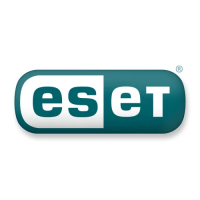
Do you have a question about the ESET SMART SECURITY and is the answer not in the manual?
| Type | Antivirus security |
|---|---|
| Number of PCs | 3 |
| Software type | Box |
| Language version | Turkish |
| License quantity | 3 license(s) |
| License term in years | 1 year(s) |
| Platform | PC |
| Minimum processor | - |
| Minimum storage drive space | - MB |
| Mac operating systems supported | No |
| Windows operating systems supported | Yes |
Overview of new features and architecture.
Hardware and software requirements for ESET Smart Security.
Step-by-step guide for standard installation.
Options for customizing the installation process.
Option to retain previous settings during reinstallation.
Inputting license credentials for automatic updates.
Performing manual scans for malware detection.
Overview of the ESET Smart Security interface and modes.
How to verify the status of protection modules.
Troubleshooting common program issues and solutions.
Configuring virus signature and program component updates.
Configuring network zones for computer protection.
Guarding against malicious attacks via file, email, and Internet.
Continuous scanning of files for malware at access.
Controlling email communication through POP3 and other protocols.
Monitoring and controlling Internet connectivity and web traffic.
Performing on-demand scans for malware detection.
Configuring advanced scanning methods and parameters.
Automatic, Interactive, and Policy-based firewall modes.
Defining rules for network connection control.
Reviewing firewall events for security analysis.
Utilizing Bayesian filtering and user input for spam detection.
Managing trusted and blocked email addresses for filtering.
Configuring update sources, servers, and authentication.
Detailed settings for updates, including mode and proxy.
Scheduling automatic update tasks.
Safely storing detected infected files.
Sending quarantined files for analysis.
Recording and viewing important program events.
Customizing the ESET Smart Security working environment.
Configuring how threat alerts and system notifications are displayed.
Configuring the submission of suspicious files for analysis.
Collecting and submitting anonymous system statistics.
Managing security policies and client workstations remotely.
Managing ESET product license keys.
Configuring proxy server settings for advanced users.
Backing up and restoring ESET Smart Security configurations.
Launching ESET Smart Security modules via command line.
Definitions of various types of malicious software.
Malicious software that corrupts files and replicates.
Self-replicating malware that spreads across networks.
Malware disguised as legitimate programs to infiltrate systems.
Malware that secretly collects and transmits user information.
Techniques used by attackers to compromise remote systems.
Communication via electronic mail and related security issues.
Criminal activity to obtain sensitive data via deceptive emails.
Identifying indicators of unsolicited email.











